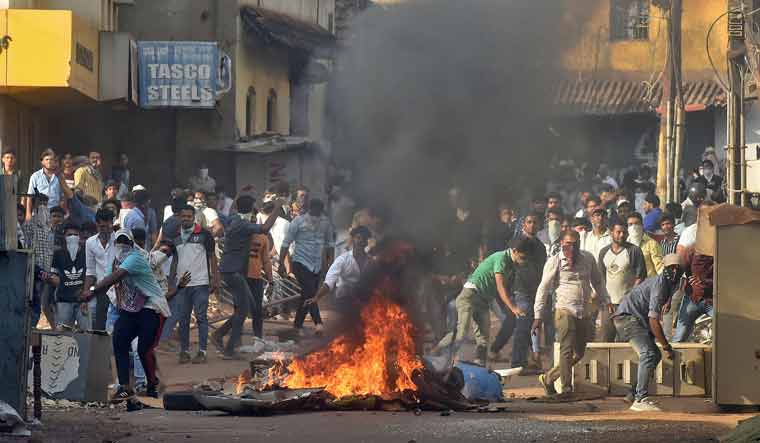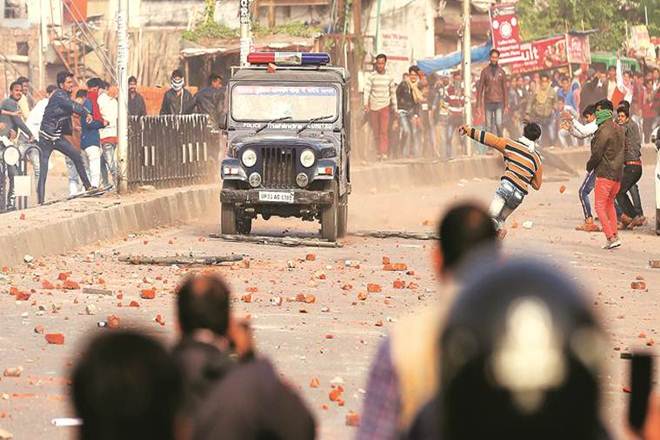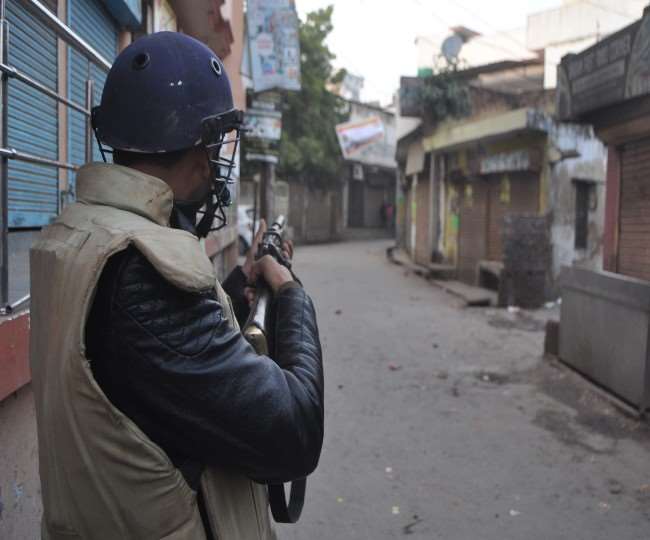Trigger Warning: Violence, Police Brutality, Public Property set to fire
The introduction of the Citizenship (Amendment) Act 2019 (CAA) sparked off nationwide protests, mainly led by students in cities and towns across the country – New Delhi, Mumbai, Bangalore, Kolkata, etc. The Northeast had its own movement, most notably with Assam and Tripura rising up against the highly controversial act. While CAA, along with the National Register of Citizens (NRC) and National Population Register (NPR) has quite a number of shortcomings – the two things by themselves or taken together has grave consequences for the marginalized: Muslims, Adivasis, indigenous people, the poor, etc. – what this entire movement has brought to the fore is how freedom of speech in India has become a dictate confined to the pages of the Constitution.
These protests have been the most widespread expression of dissent this country has seen in recent times, with some terming it a ‘revolution’. However, it seems that any disagreement, any critical voices are not just unwelcome, but violently so.

On 19th December 2019, two people died in Mangalore as a result of violent clashes between the police and the protesters. They were Jaleel, 49 and Naushin, 23. On the same day, Mohammad Wakeel succumbed to gunshot wounds in Lucknow. According to The Indian Express and The Wire, none of the victims were involved in the protests. Uttar Pradesh has been facing the brunt of the violent outcomes of the anti-CAA protest. Meerut, Kanpur, Bijnor have been few of the majorly affected areas reporting death and injuries of people both involved and not involved in the protests.
The statements made by these ministers should be worrying. As of 25th December 2019, the current death toll in the protests has reached 25 nationwide, with UP having the highest number of deceased. But we haven’t heard of any official investigations or calls for monetary aids by the UP government. Instead, public property is taking the spotlight.
The Ministers Of Fear And False Promises
Karnataka Chief Minister, BJP’s BS Yediyurappa initially offered compensation for the victims’ families, offering Rs.10 lakh each. However, he soon went back on his word, claiming that he can’t provide compensation to criminal’s families. The two victims’ names were present in an FIR filed by the Mangalore police, which says that about 1500-2000 violated prohibitory orders (Section 144 was imposed when the protest broke out) and behaved aggressively.
Yediyurappa’s backtrack suggests involvement of some external forces as initially he had gone as far as to suggests building homes for the families. BJP MLA Basangouda Patil Yatnal said, “Only patriots and people who are protecting cows should be given compensation and not to the people who involved in this protest,” urging the CM to not give monetary aid. The MLA’s words seems to convey a very specific meaning for the protesters – their death does not matter. The ongoing narrative for all protesters have revolved around them being violent aggressors deserving no mercy, scarcely has the reason behind the protests been given much thought.

UP Chief Minister BJP’s Yogi Adityanath vowed to ‘take revenge’ on protestors who damaged public property. The UP government has been following through with that threat; the Rampur administration issued notices to 26 people for damage to public property. Moreover, they’ve started identifying the protesters: Superintendent of Police, Sambhal, Yamuna Prasad said posters of 150 people have been released and 55 have been identified for their involvement in violent protests. Furthermore, there are numerous reports of police breaking into homes and vandalizing property, stealing money. Uttar Pradesh government has suspended internet connections in a number of districts, making communication difficult.
Adityanath’s call for revenge should be seen as the red flag that it is. The chief minister of a state is expected to maintain calm in adverse situations, make measured statements and take appropriate decisions. Circumstances that result in loss of life and property warrant a call for justice, not revenge. Governments are formed to protect the interests of people, restore balance by listening to both sides of a story. They aren’t supposed to choose a side and brutally hit back.
Circumstances that result in loss of life and property warrant a call for justice, not revenge. Governments are formed to protect the interests of people, restore balance by listening to both sides of a story. They aren’t supposed to choose a side and brutally hit back.
Damage To Property Over Damage To Life?
What’s to note here is that, while protests have been going on in a lot of states across the country, only BJP ruled states have reported deaths. Delhi, where the police force comes under the Home Ministry’s administration has also reported events of extreme police brutality along with illegal detentions. While protests do have a tendency to turn violent, injuring both sides, ground reports and eyewitness accounts suggest that in almost all cases these protests have been peaceful, with protesters turning violent only when the police used violence as a means of suppression.

Also read: 10 Posters At The CAA Protests In Delhi That Scream Resistance
Mainstream interpretation of protests have always centered around narratives of miscreants causing damage to property. And it continues to be so right now. What this leads to is a sense of dehumanization along with criminalization – often without any real investigation into the cause of the protests. The UP government’s move to identify protesters seeks to do just that – associate a sense of irreversible criminality to protesters, effectively shifting attention from the cause. As a result, deaths related to protests are seldom given the attention and the grief they deserve. Instead, they are toted to be criminals, with CMs denying compensation and claiming revenge. Apparently, compensations are only valid for loss of property, never for life.
Conclusion
These times should be worrying. The statements made by these ministers should be worrying. As of 25th December 2019, the current death toll in the protests has reached 25 nationwide, with UP having the highest number of deceased. But we haven’t heard of any official investigations or calls for monetary aids by the UP government. Instead, public property is taking the spotlight.
Also read: What Is Section 144 And Why We Should Still Resist Against CAA
These protests have shown the state of dissent in our country – to go against the government is a dangerous act. Such is the state of things that suppression resulting in injury and death has become acceptable. To go out to protest, has become synonymous to risking your security. In today’s India, freedom of speech isn’t a right, rather a risk – but a necessary one, nonetheless.
Featured Image Source: DNA India




